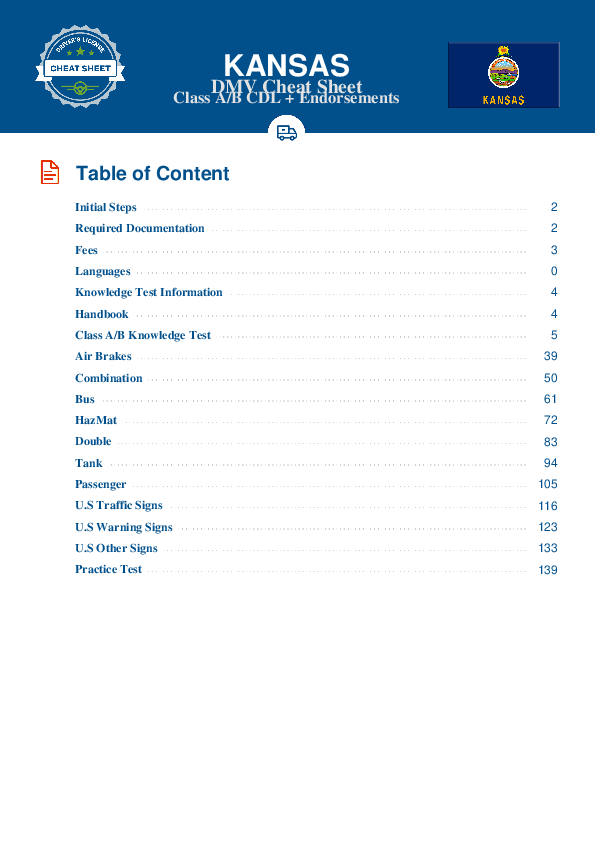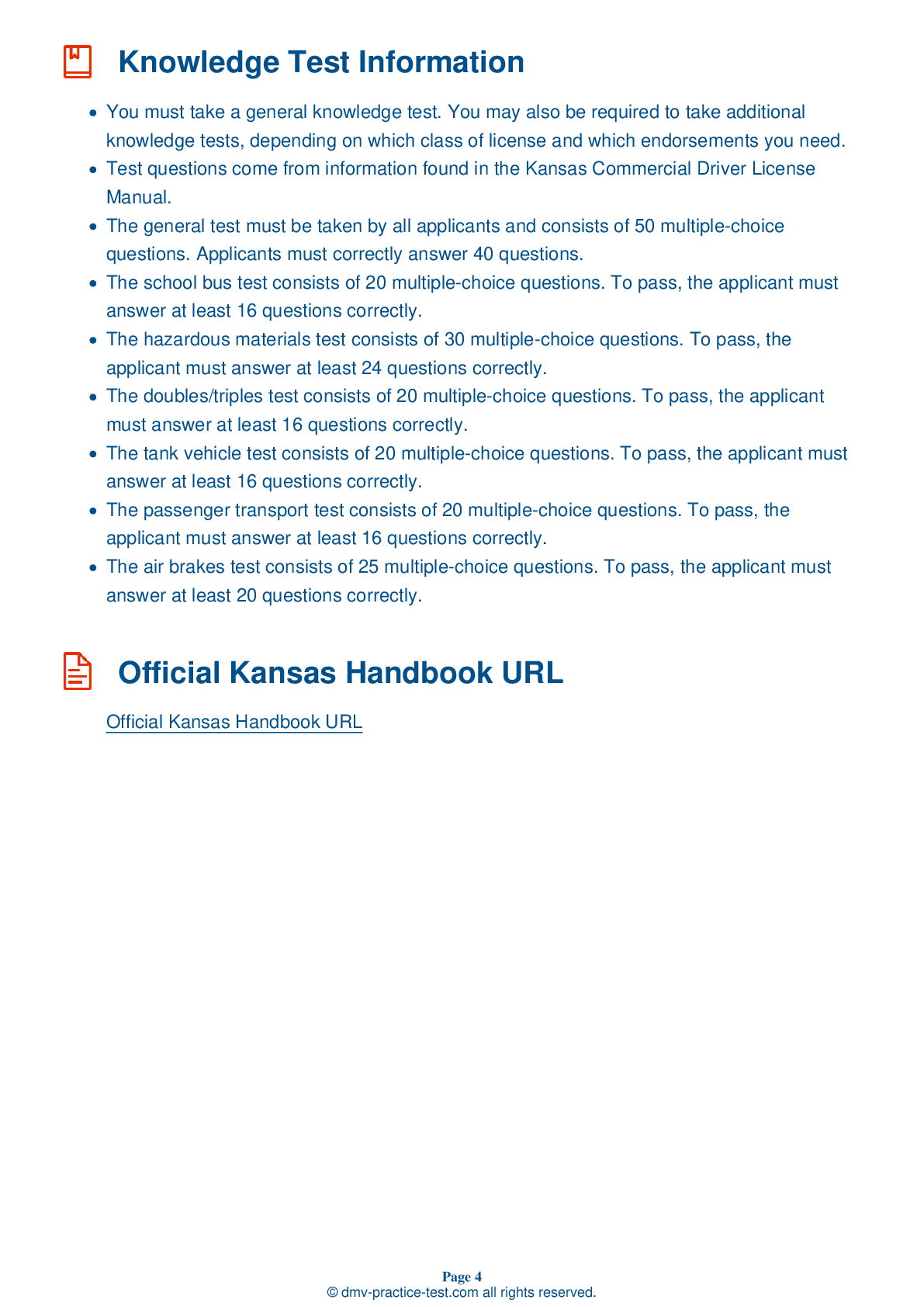Double Triple Test | Kansas 2025 #2 Page 2 of 3
Train for FREE with our Kansas CDL double triple practice test online. The official exam test consists of several obligatory parts, with all of them checking your knowledge of different blocks of road rules. If you need to obtain a KS CDL double triple license in 2025, practice as much as possible. Free sample tests published on our website will help you check and improve your knowledge and boost your grades. Please bear in mind that DMV requirements may vary from state to state.
8 . The trailer hand valve:
The trailer hand valve should not be used for parking. This could cause all of the air to leak out of the braking system, resulting in the brakes releasing. Instead, use the parking brake.
9 . How many daily hours of sleep does an adult need to maintain alertness?
Being properly rested is essential to the safe operation of a CMV. To maintain alertness, most people need seven or eight hours of sleep per night.
10 . The best way to recognize that your trailer has begun to skid is by:
The earliest and best way to recognize the beginnings of a trailer skid is by seeing the trailer veer off-course in your mirrors.
11 . If the trailer begins to skid, it is best to:
If your trailer begins to skid, you should release the brakes to help regain traction. Once the wheels grip the road again, the trailer will begin to straighten out and follow the path of the tractor.
12 . If unsure if a road is becoming icy, a driver can:
If you think the road surface may be becoming icy, you can check for ice on your vehicle by opening the window and feeling the front of the side mirror, mirror support, or antenna. If ice has formed on any of these items, the road is likely becoming icy as well.
13 . If another driver is tailgating you, you should:
If you are being tailgated, it is advisable to open up the space in front of your vehicle, making it easier for the tailgater to get around you. Speeding up may be counterproductive because the driver may continue to tailgate you at the higher speed, only increasing the danger.
14 . Which of the following indicates drowsy driving?
Indicators of drowsiness while driving include your eyes closing or going out of focus by themselves, having trouble keeping your head up, and drifting between lanes.
See the exact questions that will be on the 2025 Kansas DMV exam.
99.2% of people who use the cheat sheet pass the FIRST TIME
Lillian MCcranie explains how our CDL study guide was helpful in passing the exam and recommends it to everyone.
Cameron tells us how he purchased the CDL exam, and found it to be a useful tool which helped him pass the exam and find a job.



